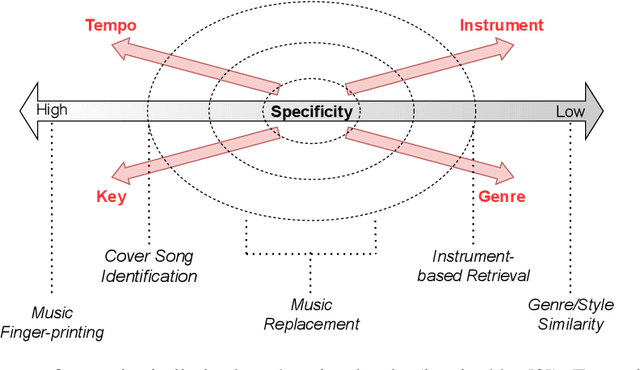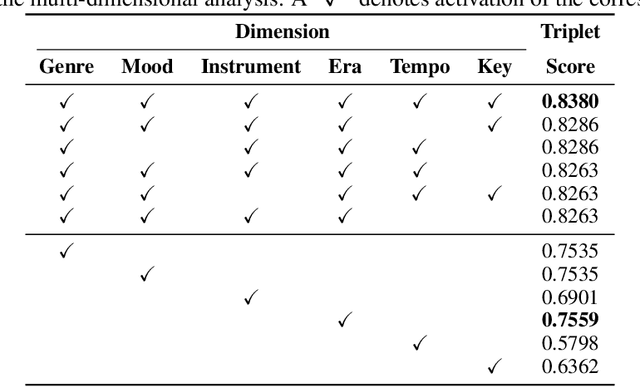Sebastian Ribecky
Multi-input Architecture and Disentangled Representation Learning for Multi-dimensional Modeling of Music Similarity
Nov 02, 2021



Abstract:In the context of music information retrieval, similarity-based approaches are useful for a variety of tasks that benefit from a query-by-example scenario. Music however, naturally decomposes into a set of semantically meaningful factors of variation. Current representation learning strategies pursue the disentanglement of such factors from deep representations, resulting in highly interpretable models. This allows the modeling of music similarity perception, which is highly subjective and multi-dimensional. While the focus of prior work is on metadata driven notions of similarity, we suggest to directly model the human notion of multi-dimensional music similarity. To achieve this, we propose a multi-input deep neural network architecture, which simultaneously processes mel-spectrogram, CENS-chromagram and tempogram in order to extract informative features for the different disentangled musical dimensions: genre, mood, instrument, era, tempo, and key. We evaluated the proposed music similarity approach using a triplet prediction task and found that the proposed multi-input architecture outperforms a state of the art method. Furthermore, we present a novel multi-dimensional analysis in order to evaluate the influence of each disentangled dimension on the perception of music similarity.
 Add to Chrome
Add to Chrome Add to Firefox
Add to Firefox Add to Edge
Add to Edge